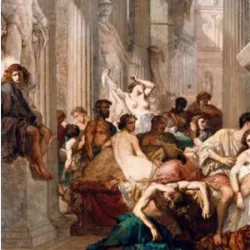The Literature That Revealed the Truth

Realism was a literary movement that emerged in the second half of the 19th century, breaking with the idealism and subjectivity of Romanticism. Marked by objectivity, social criticism and psychological analysis of characters, Realism sought to portray life as it really was, without idealizations or sentimental exaggerations.
In world literature, the movement was marked by Madame Bovary (1857), by Gustave Flaubert, as well as the works of Honoré de Balzac and Leo Tolstoy. In Brazil, Realism began in 1881, with the publication of Memórias Póstumas de Brás Cubas, by Machado de Assis, which innovated by creating an ironic and questioning narrator. Other important works include O Mulato, by Aluísio Azevedo, and Dom Casmurro, also by Machado, which delved deeper into psychological analysis and the famous enigma of Capitu.
The historical context of Realism was influenced by the Industrial Revolution, the advancement of scientific and positivist thought, and the social transformations of the 19th century. In a period marked by inequality and urban changes, realists used literature to denounce hypocrisies and contradictions in society.
The movement influenced modern literature, consolidating a new way of narrating, based on reason and critical observation of reality.
Did you know?













